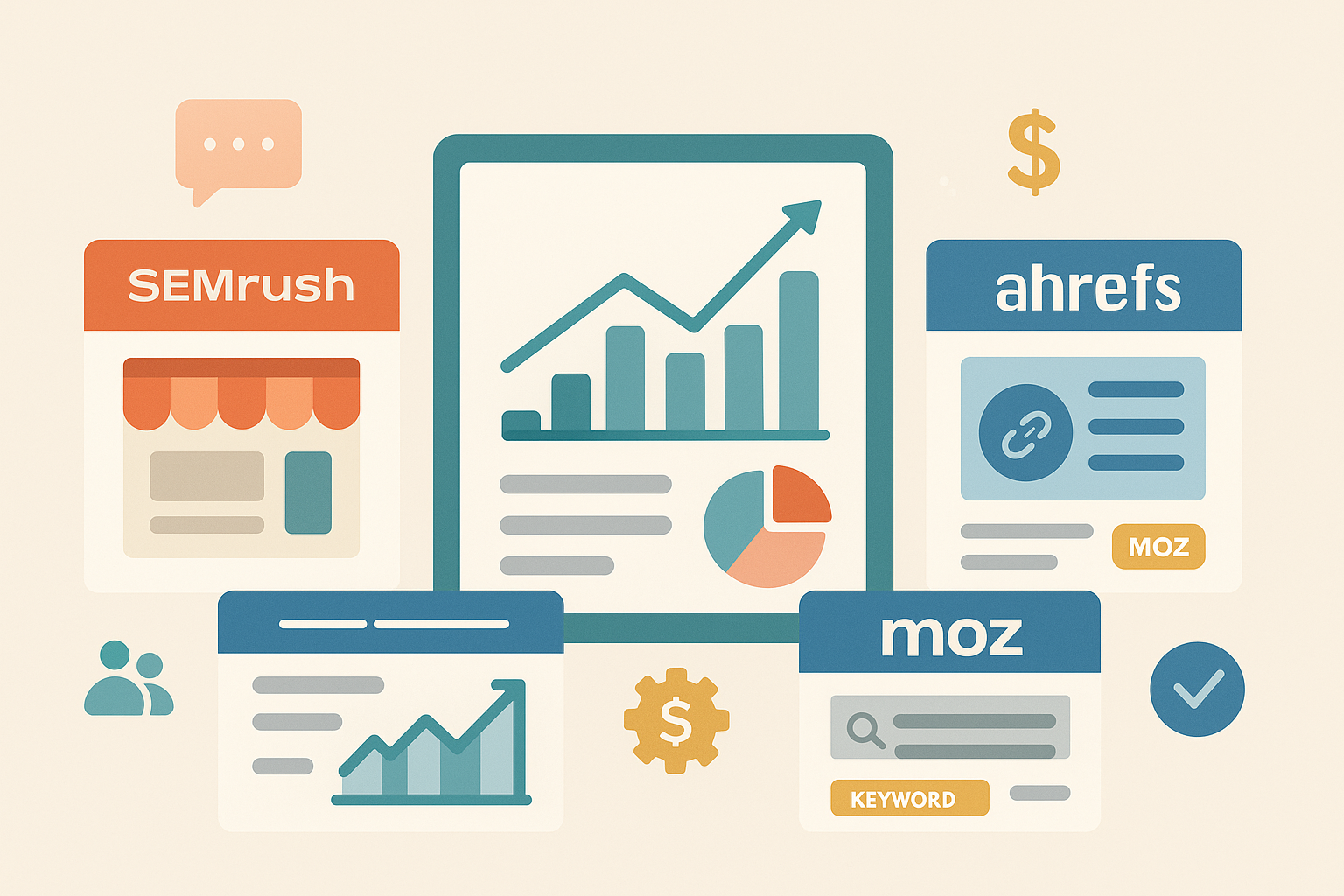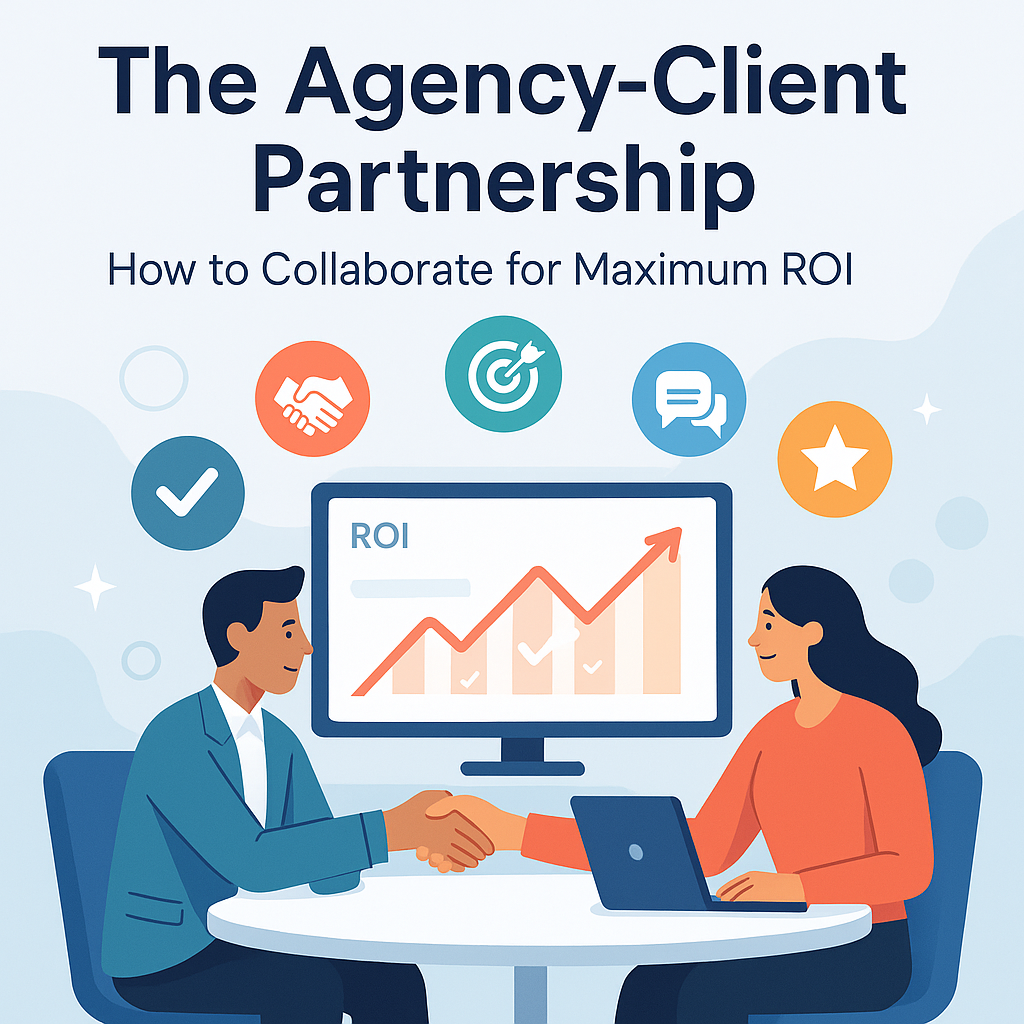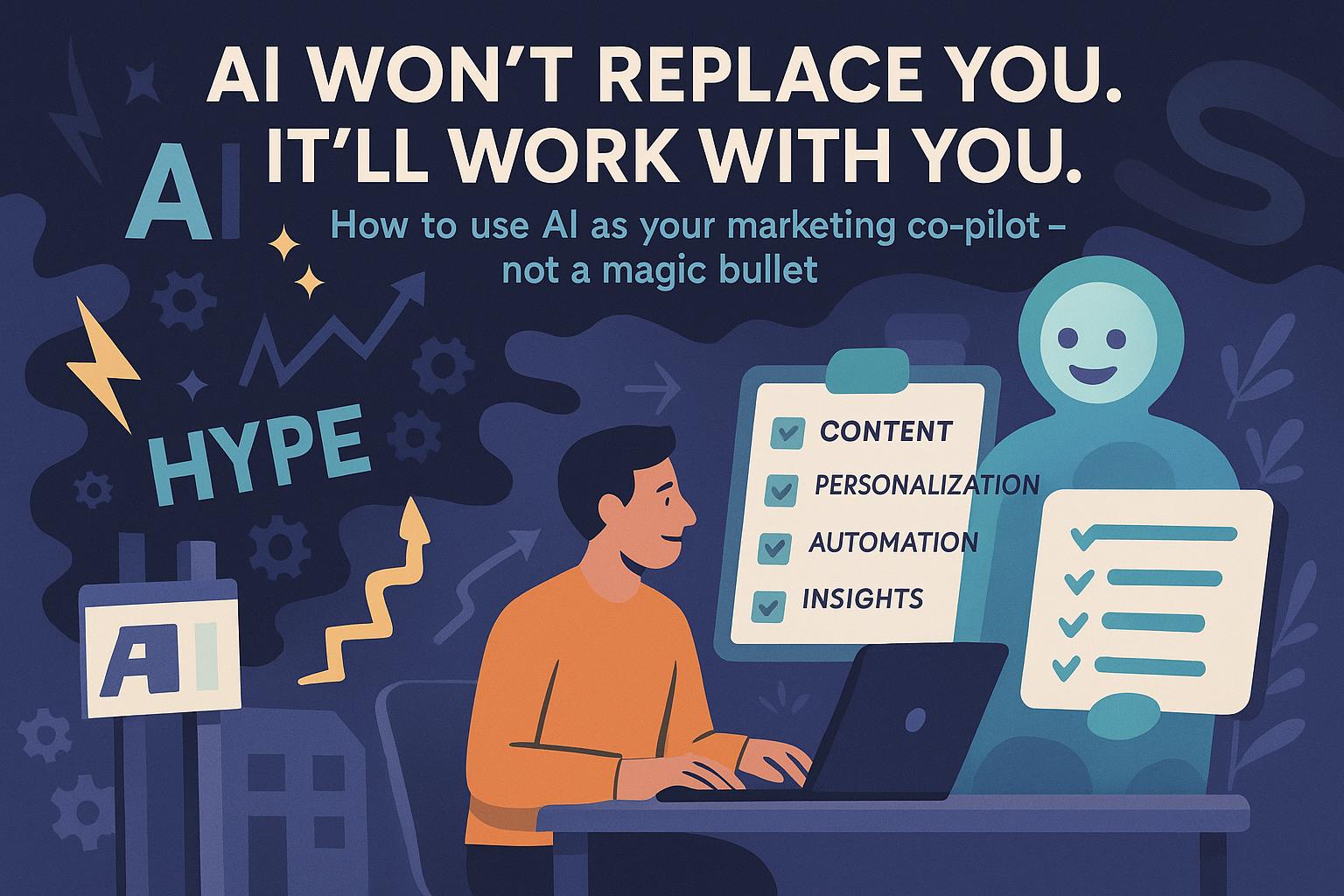You just got your monthly marketing report. It's sitting in your inbox, twenty pages of charts and acronyms. CTR, CPC, ROI, CAC, and about a dozen other three-letter combinations that might as well be ancient hieroglyphics. You see numbers everywhere, but what's the actual story? What does any of this mean for your business?
If that sounds familiar, you're not alone. Most business owners feel completely disconnected from their marketing data. They see metrics flying past but struggle to connect them to what really keeps them up at night: sales, growth, and profit. Here's a sobering stat: only 23% of marketers are confident they're tracking the right KPIs. So if the professionals are confused, no wonder business owners feel lost.
But here's what I want you to know. Marketing data isn't just a collection of random numbers. It's the story of your business, written in a language you can learn. And you don't need a data science degree to understand it.
This guide will translate the jargon and simplify the numbers. We'll show you how to read a marketing report, focus on the few metrics that truly matter, and ask the right questions to understand the story behind the data. By the end, you'll feel confident and maybe even a little excited when that monthly report lands in your inbox.
Context is Everything: The Golden Rule of Analytics
Before we look at any specific metrics, let me share the single most important principle of reading marketing data. It comes from Hans Rosling, a brilliant statistician who spent his life making data understandable:
"The most important thing you can do to avoid misjudging something's importance is to avoid lonely numbers. Never, ever leave a number all by itself. Never believe that one number on its own can be meaningful. If you are offered one number, always ask for at least one more. Something to compare it with."
This is brilliant, and it changes everything about how you should read your reports. A conversion rate of 3% means nothing by itself. Is that good? Bad? Average? You have no idea until you compare it to something else.
Think about it this way. If I told you I ran a marathon in four hours, what would that mean to you? Nothing, really, unless you know that last year I couldn't run a mile. Or that the average marathon time is around four and a half hours. Or that my goal was three hours and forty-five minutes. Context transforms a meaningless number into meaningful insight.
When you look at any metric in your marketing report, you should make three key comparisons:
Comparison over time (trends): Is this number going up or down from last month? What about compared to the same month last year? Trends tell you whether you're moving in the right direction. A 2% conversion rate might seem low, but if it was 1% three months ago, you're actually crushing it.
Comparison to goals (performance): How does this number stack up against the target you set? If your goal was 500 new leads and you got 450, you're at 90% of target. That's pretty solid. But if your goal was 200 and you got 450, someone deserves a bonus.
Comparison across segments (insight): How does this metric for organic search compare to paid ads? How does this email campaign compare to the last one? These comparisons help you understand what's working and where to invest more resources.
Remember this rule, and you'll never be fooled by a lonely number again. Now, let's talk about organizing all these metrics into something that makes sense.
From Awareness to Action: KPIs for Every Stage of the Customer Journey
One reason marketing reports feel overwhelming is that they throw dozens of metrics at you without any organization. It's like someone dumping a thousand puzzle pieces on your desk without showing you the picture on the box.
The marketing funnel gives you that picture. It organizes your metrics based on where customers are in their journey with your business. And suddenly, everything starts to make sense.
Let me break this down into three simple stages:
Top of Funnel: Awareness
This is where potential customers first discover you exist. The question here is simple: "Are we reaching new people?"
The main metrics at this stage are impressions (how many times your content was seen) and reach (how many unique people saw it). Think of impressions like billboard views on a highway. If 10,000 cars drive past your billboard each day, that's 10,000 impressions. But if the same 1,000 people drive past it ten times, your reach is only 1,000.
These numbers tell you about the size of your potential audience and your brand's visibility. They're important because you can't sell to people who don't know you exist. But (and this is crucial) these are what we call "vanity metrics" if they're not connected to the rest of the funnel. High awareness without engagement or conversions is like having a packed restaurant where nobody orders food.
Middle of Funnel: Consideration
Now we're getting somewhere. People know you exist, but are they actually interested? Are they engaging with your content, visiting your website, considering you as an option?
The key metrics here include Click-Through Rate (CTR), which shows the percentage of people who clicked on your ad or link. If 1,000 people saw your ad and 30 clicked, that's a 3% CTR. You'll also look at Cost per Click (CPC), which tells you exactly what you're paying for each of those clicks. And Time on Page, which shows whether people are actually reading your content or bouncing immediately.
These metrics reveal how compelling and relevant your marketing really is. A low CTR might mean your ads aren't resonating with your audience. A high bounce rate could mean you're attracting the wrong people or your website isn't delivering on your ad's promise. This is where you start to see if your marketing message is hitting the mark.
Bottom of Funnel: Decision
This is where the rubber meets the road. People know you, they're interested, but are they actually buying? Are they becoming customers?
The star metric here is Conversion Rate, the percentage of visitors who take the action you want (buy something, fill out a form, book a consultation). Then there's Customer Acquisition Cost (CAC), the total cost to get one new customer. And finally, Return on Investment (ROI), which tells you whether all this marketing is actually making you money.
These bottom-funnel metrics connect directly to your bank account. They're the bridge between marketing activity and business results. And honestly? These are the ones you should care about most.
Beyond the Jargon: The Only 3 Metrics That Really Matter to Your Bottom Line
Alright, let's cut through all the noise. If you only had time to look at three numbers in your marketing report (and some months, that might be all you have), these are the three that matter most for your business's health.
1. Customer Acquisition Cost (CAC)
This is the total cost of marketing and sales to get one new customer. It answers the fundamental question every business owner should know: "How much does it cost us to buy a customer?"
Here's how you calculate it: Take your total marketing and sales costs for a period (let's say a month) and divide by the number of new customers you got that month. If you spent $10,000 on marketing and sales and got 100 new customers, your CAC is $100.
Why should you care? Because if your CAC is higher than what a customer is worth to your business, you're literally paying to lose money. It's like buying dollar bills for two dollars each. No amount of volume will fix that math.
I once worked with a client who was thrilled about their growing customer base. Sales were up 50% year over year! But when we calculated their CAC, we discovered they were spending $150 to acquire customers who only spent an average of $75. They were growing themselves into bankruptcy. Once we identified this, we could fix it, but imagine if they'd never looked at this metric?
2. Customer Lifetime Value (CLV or LTV)
This is the flip side of CAC. While CAC tells you what you pay for a customer, CLV tells you what a customer is worth to your business over your entire relationship.
Calculating CLV can get complicated, but here's a simple version: Take your average order value, multiply by the average number of purchases per year, then multiply by the average number of years someone remains a customer. If customers spend $100 per order, buy four times a year, and stick around for three years, your CLV is $1,200.
Now here's where it gets interesting. There's a golden ratio in business: your CLV should be at least three times your CAC. This means for every dollar you spend to get a customer, you should get at least three dollars back over their lifetime.
If your CLV is $1,200 and your CAC is $400, you're right at that 3:1 ratio. That's healthy. You can sustainably grow. But if your CAC creeps up to $600 while your CLV stays at $1,200, you're at 2:1. Still profitable, but getting dangerous. Time to either reduce acquisition costs or increase customer value.
3. Return on Investment (ROI)
This is the ultimate scoreboard. ROI tells you, in simple terms, "For every dollar I put into marketing, how many dollars do I get back?"
The formula is straightforward: (Revenue from Marketing minus Cost of Marketing) divided by Cost of Marketing, then multiply by 100 to get a percentage.
Let's say you spent $5,000 on a marketing campaign that generated $20,000 in revenue. Your profit from marketing is $15,000. Divide that by your $5,000 investment, and you get 3, or 300% ROI. For every dollar you spent, you got three dollars back in profit.
What's a good ROI? It depends on your industry and business model, but generally, anything above 100% means you're making money. The higher, the better, obviously. But watch out for suspiciously high ROI numbers (like 1,000%). They might mean you're not investing enough in marketing and leaving money on the table.
Reading Between the Lines: What Your Reports Are Really Telling You
Now that you understand the key metrics, let's talk about reading the story they're telling. Because that's what data really is: a story about your customers and your business.
When your CTR goes up but conversions stay flat, that story might be: "We're attracting more people, but they're not the right people." Maybe your ads are too broad or promising something your landing page doesn't deliver.
When your CAC suddenly spikes, the story could be: "Competition is heating up in our market" or "Our marketing message isn't resonating anymore." Time to investigate what changed.
When your CLV increases, that's a story about customer satisfaction. People are buying more, staying longer, or both. What are you doing right? How can you do more of it?
The best marketers and business strategists don't just report numbers. They tell stories with data. They connect the dots between marketing activities and business outcomes. And now, you can too.
Your Analytics Toolkit: Questions to Ask Your Marketing Team
Armed with your new understanding, here are the questions you should ask in every marketing meeting:
About any metric: "What are we comparing this to? Last month? Our goal? Our competitors?"
About awareness metrics: "How many of these people are in our target audience? Quality matters more than quantity."
About engagement metrics: "What content is driving the highest engagement? Can we do more of that?"
About conversion metrics: "Where are we losing people in the funnel? What's the biggest leak we need to fix?"
About CAC: "How does our acquisition cost vary by channel? Where should we invest more or less?"
About CLV: "What can we do to increase average order value or purchase frequency?"
About ROI: "Which campaigns or channels are giving us the best return? How can we scale those?"
These questions will transform you from someone who receives reports to someone who drives strategy. Your marketing agency or team will appreciate working with a client who understands the game.
Common Pitfalls and How to Avoid Them
Let me save you from some common mistakes I see business owners make with their marketing data:
Obsessing over vanity metrics. Yes, it feels good to see big numbers for impressions or followers. But if those aren't translating to customers, who cares? Focus on metrics that connect to revenue.
Making decisions based on too little data. One bad week doesn't mean your entire strategy is broken. Look for patterns over time, not single data points. As a rule of thumb, wait for at least a month of data before making major changes.
Comparing apples to oranges. Your brother-in-law's plumbing business might have a 10% conversion rate while yours is 2%. But if you're selling $50,000 consulting packages and he's selling $200 drain cleanings, those aren't comparable. Compare yourself to your own past performance and industry benchmarks.
Forgetting about seasonality. Most businesses have natural ups and downs throughout the year. December might always be slow for you. Compare December to last December, not to November.
Analysis paralysis. You can measure almost everything these days, but that doesn't mean you should. Pick your key metrics, track them consistently, and don't get lost in the weeds.
The Future of Marketing Analytics (And Why You Should Care)
Marketing analytics is evolving fast. AI and machine learning are making it possible to predict customer behavior, personalize experiences at scale, and identify opportunities humans might miss.
But here's what won't change: the fundamental business questions. How much does it cost to get a customer? What's that customer worth? Are we making money?
The tools will get fancier, the dashboards prettier, the predictions more accurate. But if you understand the principles we've covered here, you'll never be left behind. You'll always be able to cut through the complexity and focus on what matters.
Your Action Plan: From Confused to Confident
Understanding your marketing analytics isn't about becoming a data scientist. It's about learning to speak the language of your business's growth. By focusing on the key metrics we've discussed (CAC, CLV, and ROI), you can move from feeling confused by data to feeling empowered by it.
Remember the golden rule: never trust a lonely number. Always ask for context and comparisons. Use the marketing funnel to organize metrics logically. And focus relentlessly on the metrics that connect to your bottom line.
You now have the complete guide to a successful agency partnership. From understanding the language of marketing to collaborating for success and measuring the results. You're an empowered client, ready to build a partnership that drives real, measurable growth.
Ready to put this playbook into action? Ready to see what your marketing can really do when you understand the numbers behind it? Contact us today, and let's start telling your business's success story through data.
Want to dive deeper into marketing analytics? Check out these resources:
Google Analytics Academy - Free courses on understanding web analytics
HubSpot's Marketing Statistics - Industry benchmarks and trends
Search Engine Journal's Analytics Guide - Advanced analytics strategies


